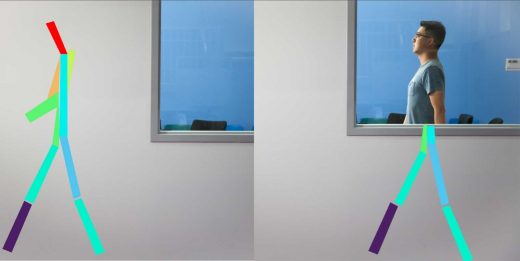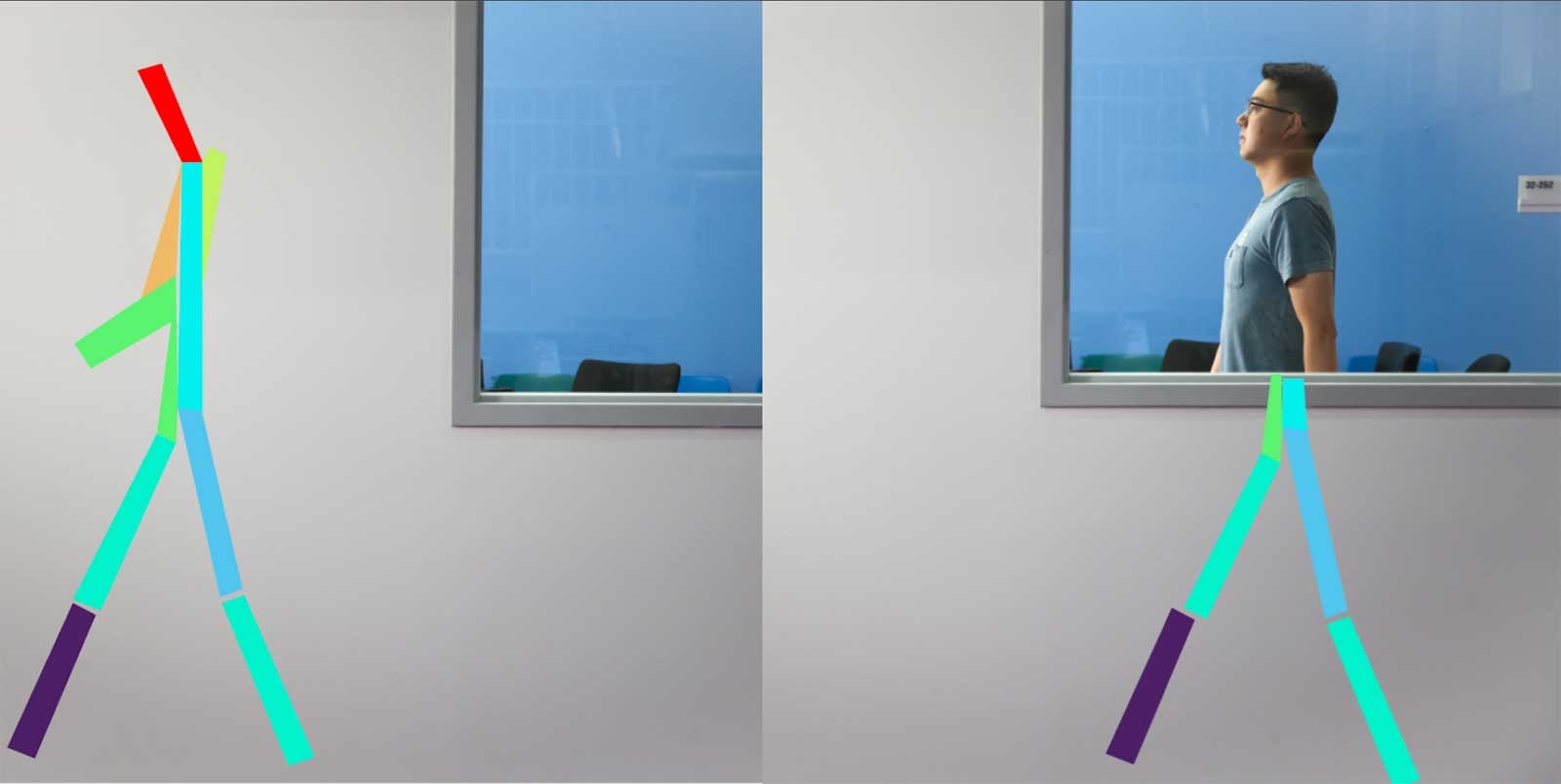AI detects movement through walls using wireless signals
You don’t need exotic radar, infrared or elaborate mesh networks to spot people through walls — all you need are some easily detectable wireless signals and a dash of AI. Researchers at MIT CSAIL have developed a system (RF-Pose) that uses a neural network to teach RF-equipped devices to sense people’s movement and postures behind obstacles. The team trained their AI to recognize human motion in RF by showing it examples of both on-camera movement and signals reflected from people’s bodies, helping it understand how the reflections correlate to a given posture. From there, the AI could use wireless alone to estimate someone’s movements and represent them using stick figures.
The scientists mainly see their invention as useful for health care, where it could be used to track the development of diseases like multiple sclerosis and Parkinson’s. It could also help some elderly people stay in their own homes by sending alerts if they fall or otherwise show signs of trouble. And since the technology is 83 percent reliable for identifying people in large groups (as many as 100 people), it could be helpful for search-and-rescue operations where it’s important to know who you’re looking for. Refinements could lead to 3D images that reveal even slight movements, such as a shaking hand.
It’s hard to escape the potential privacy concerns. This could theoretically be used to spy on nearby buildings, or follow peopl to their destination even if they duck around a corner. However, CSAIL has a privacy solution in mind: it’s developing a “consent mechanism” that would require performing specific movements before tracking kicks in. If that safeguard persisted in real-world applications, you wouldn’t have to worry about losing your privacy for the sake of convenience.
(50)




